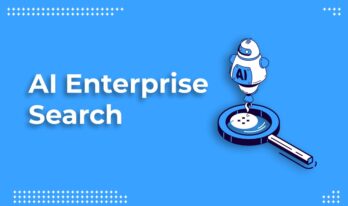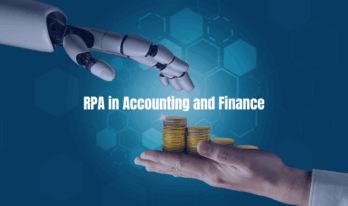We will explore the best customer data platforms in 2023. Many marketing efforts, systems, and software use CDP to collect and organize customer data. However, CDP creates an individual profile for each customer and stores real-time data in a centralized way.
In addition, customer data has become important for marketing as well as businesses. To understand the concept and working of CDP we need to understand what actually is customer data.
Best Customer Data Platforms in 2023
Customer Data
Customer data has become important for many marketing operations. Therefore, CDP came into existence to manage the customer data. Above all, if consumers use the internet to visit and interact with websites and companies via e-commerce websites, articles, and blogs, some data of the customer is left behind.
Organizations and marketers collect this data and manage them according to their operations. In the recent reports of Gartner Nadar Henein said “With more countries introducing modern privacy laws in the same vein as the General Data Protection Regulation (GDPR), the world has reached a threshold where the European baseline for handling personal information is now the de facto global standard”.
Identity Data
CDP creates customer profiles with identity data. The Identity data allows businesses and marketers to identify the data uniquely and avoid replication of customer data. For instance, this data includes information such as Name, Demographics, Location, Contact, Social, and Professional.
Descriptive Data
Descriptive data contains additional information about the customers. Different companies require different types of data for their operations. For instance, an eCommerce company will require the lifestyle data of the customer. The different types of Descriptive data are as follows:
- Hobby information
- Family information
- Career information
- Lifestyle information
Quantitative or Behavioral Data
This data allows organizations to understand the behavior of each customer. For instance, customer behavior is identified by their reactions, transactions, or actions with their organizations. Different categories of Quantitative data include:
- Transactional information: Information such as purchase and return of the product, order data, number of products in the cart, etc. are categorized under Transaction data.
- Email information: It provides information on the number of clicks and opens of emails.
- Online Social activity information: For instance, it provides information on customer activities like which website they visited, which product they recently viewed, and their social media activities.
Qualitative Data
This data adds context to the customer's profiles. In addition, the CDP collects information such as customer attitudes, opinions, and motivations. The different types of Qualitative data are as follows:
- Attitude information: It provides customer information like favorite color, animals, or food.
- Motivation information: It provides information regarding the questions like Why did you choose this product? From where did you hear about the product? Etc.
- Opinion information: For instance, it provides information about the customer's opinion about the products.
Benefits of CDP
CDP improves customer relationships and increases the productivity of the organization. Here are the following benefits of customer data platforms.
- It avoids Data Silos that slow the pace of the organizations.
- However, CDP collects the data directly from the customers.
- With sufficient data on the customer, the organization can get to know them.
- Therefore, if multiple marketing operations are in progress simultaneously, CDP unifies them by supplying accurate data.
- Customer Data Platforms are the most organized data management systems.
- In conclusion, CDP has improved data privacy and protection.
Best Customer Data Platforms in 2023
CDP helps businesses to have a unified view of what exactly their customers need. In other words, marketing campaigns gain massive success with the help of CDPs. However, there are plenty of CDPs available in the market today.
Therefore, we are showing you some of the best customer data platforms to choose the best CDP for your business in 2023.
Bloomreach Engagement
Organizations can utilize Bloomreach Engagement to scale digitally. In addition, this platform enhances the customer experience and unifies customers' data.
The CDXP helps you securely store your own data. Therefore, to gain insights they can use the analytics capabilities.
Pros
- Provides multiple channel campaign execution.
- In addition, based on the behavior of the customer in real-time organizations can personalize the product.
- The user interface is simple and easy to use.
Cons
- It does not support automatic dashboards for various surveys.
- Similarly, the web layer is complex.
Treasure Data
Treasure Data unifies all the operations like sales, marketing, and services to provide a unique customer data experience. However, to create customers' data profiles it uses IoT devices.
It can work with big data volumes easily and can provide accurate analytics. In addition, organizations with multiple data sources can integrate with Treasure Data.
Pros
- Faster processing time and data aggregation.
- Insights that are both predictive and actionable.
- Integrations that are seamless.
Cons
- Lack of flexibility
- The GUI is slow.
Segment
With the help of Segment, you can enhance customer experiences by using the customer data at various touchpoints. In other words, organizations can give access to the product development teams' data to understand the customers' needs more accurately.
Pros
- Organizations can integrate the Segment with existing CRM tools.
- Similarly, the integration of data is processed in real-time.
Cons
- The process of onboarding is confusing.
- However, to get accurate results we need to insert the code snippets.
ActionIQ
ActionIQ is developed to fragment chronic customer data. Similarly, it can access the data at any touchpoints in real-time. In addition, to enhance personalization it allows users to align technology, processes, and users.
In conclusion, an organization that requires advanced segmentation and better handling of customer journeys can use this platform.
Pros
- Journey planning that is intuitive
- Functionality in abundance
- In addition, excellent client service and support staff is provided
Cons
- The flight process is cumbersome.
- Reporting is restricted.
Tealium AudienceStream CDP
This platform provides engagement of customers in real-time. However, it enables you to obtain real-time analytics besides customer data unification.
The platform is equipped with machine learning technology. Therefore, the integration with CRM is faster and it provides centralized access. In conclusion, this platform is best for customer engagement, advertising management, and improved helpdesk.
Pros
- There are a plethora of applications.
- Data collection and management in real time.
- A large number of connectors are available.
Cons
- The learning curve is a little steep.
- The user interface is intimidating.
- However, it is possible to improve concurrent user support.
BlueConic
BlueConic consolidates the information into the main database allowing users a 360-degree view of customers data. Similarly, it unifies the customer’s data and enables you to create customer profiles in a detailed view to enhance customer engagement.
In addition, we can customize the email campaigns and deploys website overlays easily because of its user-friendly interface. These email campaigns can also be used to promote ads.
Pros
- The platform is scalable.
- The data tools are flexible.
- In addition, the platform provides regular updates.
Cons
- Reporting and analytics are restricted.
- However, some of the integrations have bugs.
Lytics
With Lytics we can create marketing campaigns that are relevant and custom digital experiences. In addition, with the help of machine learning and data science, it enables teams to streamline the campaign across several platforms.
It provides integration with over 80 downstream tools. Therefore, it boosts the tech stack of marketing.
Pros:
- Segmenting your audience is simple.
- Similarly, excellent system for behavioral scoring
- Excellent targeting.
Cons
- Customization options are limited.
- Similarly, Integration with other apps is difficult.
Amperity
Amperity is powered by Artificial Intelligence to improve the performance of marketing. In other words, with the help of Amperity, you can connect with customers and understand them. However, small businesses commonly use this platform.
Pros
- Audience segmentation is simple to use.
- Outstanding predictive analytics.
- Instantly unlocks insights.
Cons
- The interface that is difficult to use.
- Similarly, campaign reporting is limited.
FirstHive
FirstHive was the first platform ever to use machine learning. However, in terms of marketing metrics, it has provided positive results. To create a unified customer identity from the data collected from multiple sources, FirstHive utilizes machine-learning algorithms.
In addition, while maintaining the privacy regulations you can also manage the customer’s data.
Pros
- Graphical user interface that is easy to use.
- Campaign execution and support team that is efficient.
- Compliant with the General Data Protection Regulation (GDPR) and the California Consumer Privacy Act (CCPA).
Cons
- It is difficult to change an existing campaign.
- Similarly, the learning curve is relatively steep.
Hull
Hull CDP unlocks the data silos. Similarly, it gathers all the customers’ data to keep all the teams in sync.
In addition, marketing data, CRM, and customer data integration are integrated into this platform for consistent representation.
Pros
- Integrations that are deep and native.
- Data synchronization in real time.
- In addition, they provide excellent client service and support.
Cons
- Downtimes are common.
- There are fewer integrations available.
Conclusion
By consolidating the customer’s data from various resources, organizations can avoid data silos. However, there are plenty of CDPs offering common features for capturing customer data. Choosing the right CDP platform for your organization should understand the nature of your business and consider the goals. After that, you should look for the right CDP that will have the features to fulfill your needs.
You may also like to Read:
Mastering First-Party Data Strategies: Elevating Your User Data Collection




